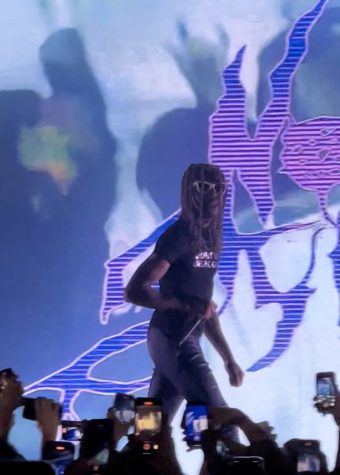Why Music Scores are Essential to Film
People might go to the movie theaters to watch a film based on fan-base hype or the famous people cast in the film to draw the audience in. However, famous films are not only known for the people involved or their fantastic story lines, but by the films’ amazing, memorable scores. Scores can help boost a film’s popularity over the years and at times, are more spoken about than the actual film itself. “Halloween” is a prime example of the necessity of music scores in films, especially in the horror genre. “Halloween” was initially made as an independent film, but now is considered an international feature film.
In one of my favorite classic films, John Carpenter’s “Halloween,” Carpenter composes a music score that works perfectly with the storyline. “Halloween Theme,” the main score is used in the opening credits of the film and is the most prominent piece the audience hears in the film. This theme is one of the most famous pieces of any major film. Most people can automatically pinpoint which film the theme belongs to, as it sends chills down one’s spine, even without watching the film.
Carpenter used “Halloween Theme” more than once, in different variations throughout the film. “Shapes Escape” uses the same tempo and musical structure as the main theme, but with some added differences, such as lower notes and what can be best described as thunder sounds. His other piece, “Loomis and Shape’s Car,” contains the same melody, but with a slight change to give the piece a different kind of menacing tone. Each and every piece was tweaked slightly to fit the corresponding scene and mood, whether it was a lighter or a more menacing tone.
Watching the film multiple times and paying close attention to when music starts and ends and who and what is present during the scene of the score is a long process. However, I started to realize things I had not noticed when I watched the film solely for enjoyment. One of the main focuses is how a theme, musical piece, from the score can revolve around the different characters and their actions, which is truly a masterpiece when you put the two and two together.
Can you imagine a film without a score? I do not think anyone can, because the film would just show actors saying their dialogue, which would be a bore to watch without the extra musical effects that completes the film.
In “Halloween,” “The Shape Lurks” is one of the themes that comes to mind when talking about this subject of effect a film score can have on a film. Laurie unknowingly walks into a death house, where both her friends have been killed by Michael. Out from the shadows, Michael appears and pushes Laurie off the stairs and that’s when she realizes she has to run for her life. This scene is the most horrifying because the music adds death to every step Michael takes as he gets closer to his goal: to kill Laurie. At the same time, the viewer feels an urge to get up from his or her seat and help the poor, innocent protagonist,Laurie Strode. Without the score, this scene would not be horrifying.
The score is an essential asset in the making of a film because without it, the film would be bland and not as vivid. Carpenter’s “Halloween” is a prime example of why scores are needed. This is one film in history to have an impact on future filmmakers’ sounds and themes and has to be one of the best scores of all time. Although it uses minimal instruments, it goes to show that you do not need a full room of orchestra professionals to create a memorable piece of art.








